Hello and welcome!
As many of you will know, the Second Session of the Synod on Synodality has begun, and I am here in Rome to take part in it.
I arrived a couple days early, on Saturday, to attend the episcopal ordination of Bishops John Kennedy and Philippe Curbelié, two priests who work in the Curia at the Dicastery for the Doctrine of the Faith. It’s not unusual for the Holy Father to ordain bishops from the Curia, but he was just returning from his trip to Belgium that afternoon. So, they were ordained by the Prefect of the dicastery, Cardinal Fernandez.

Both of them have worked in the DDF for a long time and I have especially gotten to know Bishop Kennedy through our work with the Pontifical Commission for the Protection of Minors. He is an Irish priest who is in charge of the discipline department, which is a very important responsibility. So, we were very pleased to see him ordained a bishop and I think it will enhance his role and his ability to carry out the mission that has been entrusted to him.
Of course, there were many members of their families and friends there. But it was also impressive to see how many bishops, priests and cardinals from the Curia came to the ordination. It was a beautiful ceremony — although we were still waiting for them to take down all the scaffolding around the baldacchino and the Chair of St. Peter! It was very moving to have it there at the Tomb of St. Peter. What a great place to have an ordination!
Monday, we began the two-day retreat in preparation for the start of the Synod. Father Timothy Radcliffe, OP, who had been the Master of the Dominican Order, was the preacher, and Mother Maria Ignazia Angelini led the meditations and the Office.
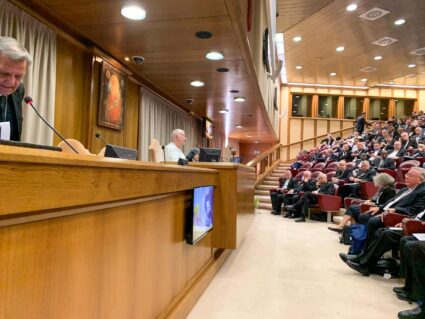
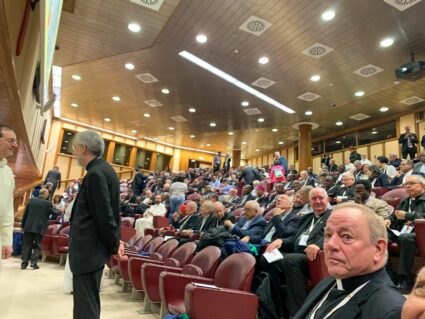
We did not go to a retreat house, as we did last year. Instead, we gathered in the Synod Hall, which resembles a large lecture hall and is where the synods were ordinarily held in the past. The retreat conferences were held there during the day, and between conferences, we went back to our residences for our meals and so forth.
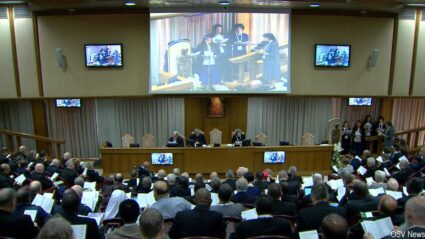
On the second night of the retreat, we had a penitential liturgy at which the Holy Father presided.
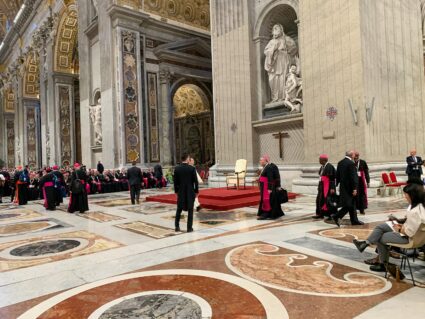


There were a number of people who gave witness talks. We heard a witness of sexual abuse from South Africa, of an African immigrant and of a consecrated woman who talked about the war in Syria.
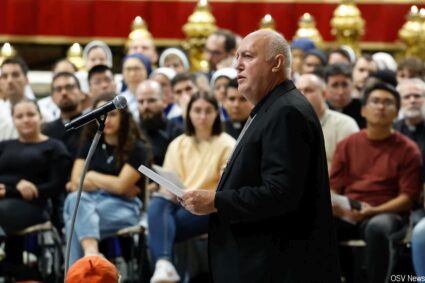
We also offered seven petitions for forgiveness that the Holy Father himself wrote. I was very honored that he asked me to give one of them.

It was a beautiful service and a wonderful way to end the retreat and prepare in a spirit of penance and humility to face the work of the Synod.
The Synod itself began on Wednesday, with an opening Mass celebrated by the Holy Father in St. Peter’s Square.
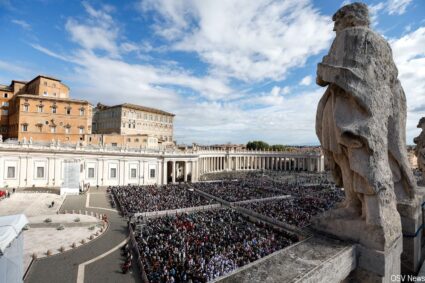


This time, I think there is greater clarity about the definition of synodality and the concentration on this way to move forward in prayer and discernment. Many of the individual topics that had held people’s attention last year have been assigned to different commissions that the Holy Father has set up so they can be dealt with by experts outside Synod itself.
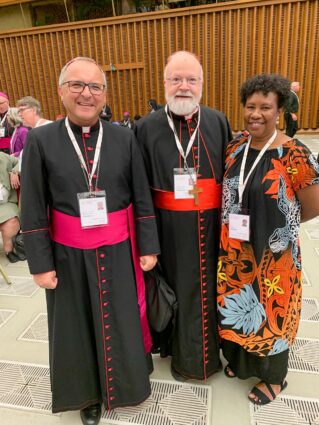
This year I’m in an English-speaking group, though I’m the only American. With us in our group are participants from Africa, India and Japan as well as a French priest.
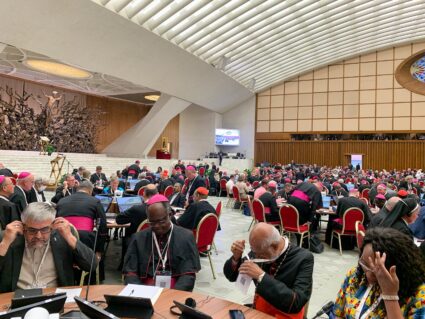
In fact, I was surprised by how many English-speaking working groups there are. So it is quite a change. There was a time when almost everything would have been in Italian.
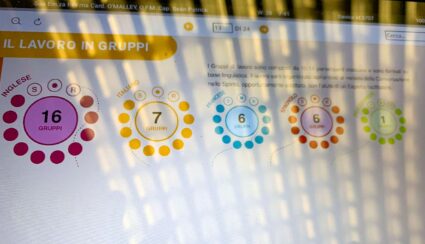
Our first step is reacting to the Instrumentum laboris, with each person giving their thoughts on the first part. After we have listened to everyone’s reflections, we have a time of prayer and silence. Then, we go back and give a sort of “echo” of that to try to come up with a single statement, or at least to express where there was convergence and where there was disagreement. Those reports are then given to a central committee that will try to meld those into a new document that will once again be taken back for evaluation.

So, it’s a process that invites a lot of participation. Everyone’s fingerprints get on the final product, so to speak. It’s not like some synods in the past, where a small committee would write the document, and then people would vote on it. Now, there’s more actual involvement in the actual ideas. This is part of what synodality is about. It’s about listening and participation. It’s about praying and looking for the guidance of the Holy Spirit.
Assigning the more difficult topics to commissions was so that we could concentrate on this process and this experience. This is a way of building unity and diversity in the Church rather than having people think that we are just coming together to iron out particular hot-button topics.
During my time in Rome, I was able to meet up with Bishop Cristiano Barbosa, who was here for the program they have for new bishops.
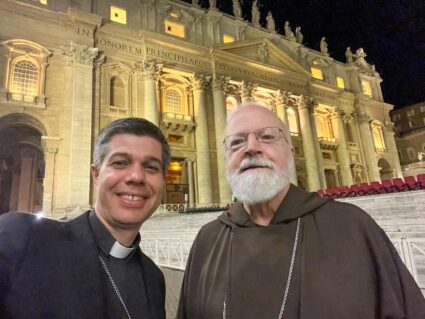
After the program finished, he stayed a few days afterwards and got to look around Rome. He had never really had that opportunity before, and I think he really enjoyed it.
Today is, of course, the Feast of St. Francis, which is very important for us as Capuchins. It is also the Holy Father’s feast day and the patronal feast of Italy. So, I was glad I was able to join the friars at our Generalate for the Transitus service, which is celebrated the night before and in which we symbolically reenact the death of our founder. We pray the Psalms that he prayed as he was dying, we sing the songs that he wanted sung, and read the Gospel about the Last Supper and the washing of the feet that he asked be read.
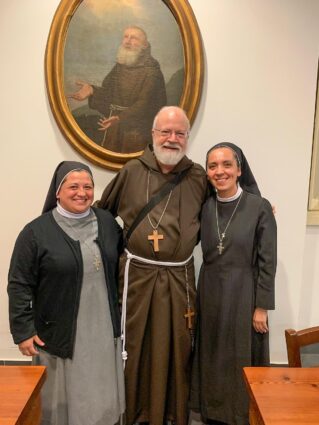
As you can see from the program, the first hymn is based on the Canticle of Brother Francis, sung to the tune of the song that came from Zeffirelli’s movie on St. Francis that came out a few years ago.

Our Father General was not there because the generals of the three Franciscan First Orders and the Third Order all go to Assisi, where they have a celebration at the Portiuncula itself. But we were very happy that Cardinal Raniero Cantalamessa was able to join us.
A member of the general council (what we used to call Definitors), Brother Maurizio Placentino, who had been the superior in San Giovanni Rotondo, gave a very beautiful reflection on St. Francis’s death.
It was a very moving service, and I was happy to be with the community on this important feast.
Finally, this week, Pope Francis made a profound call, urging people around the world to join him in observing October 7 as a day of prayer and fasting for peace. This comes at a time when the world is witnessing escalating conflicts, particularly in the Holy Land, where violence and unrest have deeply affected countless lives.
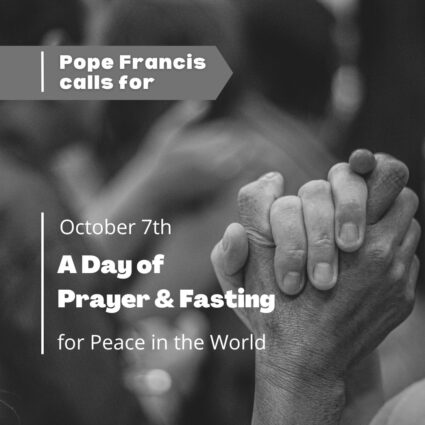
October 7 is the Feast of the Holy Rosary, and the Holy Father has said he will go with Synod participants to the Basilica of St. Mary Major on the vigil to Our Lady for peace.
That feast was actually established after the Battle of Lepanto, and that’s why October became the month of the rosary, because people were praying for deliverance from conflict. This is a dangerous time, and so we certainly want to encourage people to join the Holy Father and pray and fast for peace on that day.
Until next week,
Cardinal Seán
